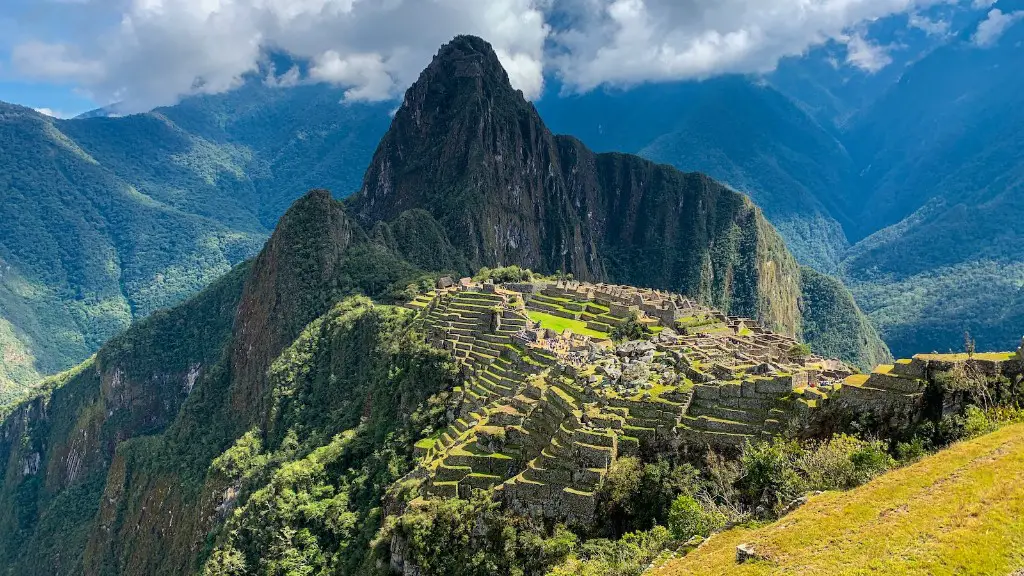Mount Vesuvius is one of the most famous volcanoes in history, primarily due to its catastrophic eruption in Pompeii in 79AD – an event that wiped out thousands of lives in a single day and thereby changed the course of early civilization. How many people died as a result of this natural disaster is still debated by scholars to this day, with estimates ranging from roughly 2,000 to as many as 16,000.
The eruption of Mount Vesuvius began in the late afternoon of the 24th of August 79AD, sending an enormous column of ash, smoke and rock 23km into the sky. Over the following days, a pyroclastic surge of red-hot ash, sulfur and other particles engulfed Pompeii at an alarming speed, devastating the area and killing the majority of its inhabitants in the process.
Due to the overwhelming destruction wreaked by the volcano, the exact number of fatalities is unknown and no official records exist. Several archaeological excavations conducted over the years, however, have provided historians with a more accurate picture of the situation. A number of burial sites in and around the city have confirmed that the number of people killed was likely in the thousands, although it is impossible to say precisely how many.
Furthermore, it is noted that the circumstances in which some of the Pompeii victims died – being buried alive under hot ash – played a role in significantly reducing the number of fatalities. With the air temperatures reaching a scorching 500 Times Celsius in some spots and the ashes acting as an insulator, people trapped in the disaster were able to survive for a relatively long time before succumbing to their fate.
Experts insist that the number of deaths is also related to the high levels of social stratification found in Roman society at the time. The poorer classes of Pompeii – who were notably without the means to flee the deadly pyroclastic flow – were the most severely and immediately impacted by the eruption. According to one estimate, around 80% of the city’s population was of lower social standing, meaning these individuals constituted a large portion of the fatalities.
The study of Vesuvius’s destruction of Pompeii is not only a means to ascertain the death toll. It is also used as a warning to modern societies of the devastating power of nature and the importance of preparedness in the event of such a disaster. It is hoped that by drawing attention to the events of 79AD, potential disasters in the present might be better mitigated.
Related Consequences of the Eruption
The pyroclastic surge that covered Pompeii also caused significant destruction to the wider area in the Bay of Naples. As its tephra spread over a 60-kilometer radius, the eruption destroyed numerous towns and cities located nearby such as Stabiae, Herculaneum, Nuceria and Surbo, obliterating these settlements from the face of the earth.
In addition to fatalities, thousands of survivors lost their livelihoods and homes, leaving them with nowhere to go as the impact of Vesuvius spread. For many, the only option was to flee and seek shelter in distant cities altogether, which in turn caused a huge influx into these areas and placed a strain on already limited resources. It is also likely that many Vesuvius refugees remain unaccounted for in the official records and that their numbers contribute to a significantly higher death toll.
The suddenness and unexpectedness of the blast is thought to have hampered some evacuation efforts. While the citizens of Pompeii had experienced earthquakes in the days leading up to the volcanic eruption, such seismic activity was seen as a common occurrence. By the time the severity of the situation became apparent, it was too late to escape the surge – and many inhabitants were caught off-guard, prompting a panicked response.
Nevertheless, some individuals managed to escape. Coins found during archaeological digs of the city suggest that some merchants were able to flee with their valuables, proving that some did succeed in getting away in time. Historical evidence also suggests that many of the survivors settled in other nearby towns, such as Stabiae and Surbo, in the immediate aftermath of the disaster.
Modern Archaeological Efforts
The excavations of Pompeii and surrounding territories since the mid-19th century have uncovered invaluable historical details related to the eruption. More recently, advanced technology has enabled researchers to modernize the study of the Vesuvius site and gain deeper insight into the tragedy. Using virtual depictions of the city pre and post disaster, observations in the ash layers and other physical artifacts, the experts have been able to piece together a clearer picture of the true scale of the destruction.
Though the task of uncovering the remains of those caught in the surge is painstaking and heartbreaking, it also helps us understand and appreciate the immense scope of the incident on a personal level. This is mirrored in the physical reconstructions of Pompeii’s victims – which, despite being a chilling reminder of the tragedy, is an invaluable tool to help ascertain the extent of the death and destruction endured.
Newer technology such as Ground penetrating radar has also been utilized to search below the surface of the buried site, revealing all the layers of ash, stone and lava beneath. This data helps paint the clearest and most detailed picture yet of the scope of the devastation and, combined with historical accounts, serves as evidence that the disaster wiped out a huge number of lives.
Identifying the Victims
The remains of Pompeii victims have been discovered over the years and their exact identities remain a mystery. DNA analysis and 3D reconstructions, when combined, hold the secrets of the victims’ identities. Historical records can also aid in linking the victims to specific individuals, as can discovering artifacts such as jewelry and coins which may offer clues.
Given the destruction of all relevant documents and the passage of two millennia since the eruption, many of the victims of Vesuvius’ destruction will never be known. This adds to the poignancy of the site. Its history is not limited to the physical destruction of Pompeii but is also a reminder of the human losses – most of which remain forever unidentified.
Reviving and Responding to the Past
Today, the site of the destruction has become a popular tourist attraction – as of June 2017, it had seen more than 2.5 million visitors. The appeal of the site is undeniable: the ruins of the city are an incredible reminder of our shared history and a stark image of what can happen when nature unleashes its full power. On a more personal level, the site works to invoke sympathy and humility in the visitor, resonating through its striking presence.
The tragedy of Pompeii is also the subject of numerous works of art and literature, instilling in the public a certain respect for the ancient city and its victims. Its image is pervasive and its story is told and re-told, helping to keep its legacy alive.
As such, the death toll of Vesuvius remains a fascinating yet sad point of focus in the history of the site. Even though the exact figure will remain unknown, it is likely to be much higher than previously thought. The archaeological evidence unearthed at Pompeii, itself a reminder of the human suffering inflicted by the eruption, serves to immortalize those left in its wake and the scope of loss endured by those caught in its path.
The Effects on the Local Environment
The eruption of Mount Vesuvius represented more than a human tragedy: the environment of the Bay of Naples was also subjected to immense destruction and disruption. A large swath of trees, crops, and land were swallowed up by the pyroclastic surge and its effects were felt across the land. This indicates that the economic and material damage caused by the eruption was not limited to the immediate site, but extended to the wider area.
In fact, with its 15 sq. kilometers of ash and pumice, Vesuvius’ footprint is recognizable in the region to this very day. Its formation on the landscape has impacted the local structures, climate and ecology in a multitude of ways – a rather morbid but interesting reminder of its devastating display of power over two thousand years ago.
The consequences of the eruption have been felt across the entirety of the Bay of Naples. Soil properties were radically changed, resulting in permanent alterations to the land and thus its appearance and usage since then. Trees, crops, and plants were destroyed, resulting in a loss of natural shade and the subsequent need for artificial means of cooling. Finally, animal habitats were impacted and the local fauna underwent significant changes as a result.
The Legacy of Mount Vesuvius
Over the years, Mount Vesuvius’ legacy has become a complicated fusion of tragedy and admiration. On one hand, the disaster resulting from its violent eruption changed the lives of thousands and the landscape around it, the effects of all this still lingering. On the other hand, its infamous story has become engraved in human memory and seeped into many parts of our culture – from fine art to popular media – with its details and events known across the world.
The tragedy of Vesuvius’ eruption has also spurred incredible advances in the sciences of archeology, anthropology, history and earth science. We now understand more than ever before about the event and its effects, thanks to the detailed studies that have since taken place over the years and the subsequent discoveries of a multitude of ancient artifacts.
The volcano’s geological instability has made it a threat across thousands of years and an awe-inspiring reminder of the volatile power of nature. However, the memory of its destructive effects two thousand years ago still remind us of the fragility of life and our need to be ever vigilant when it comes to natural disasters.

